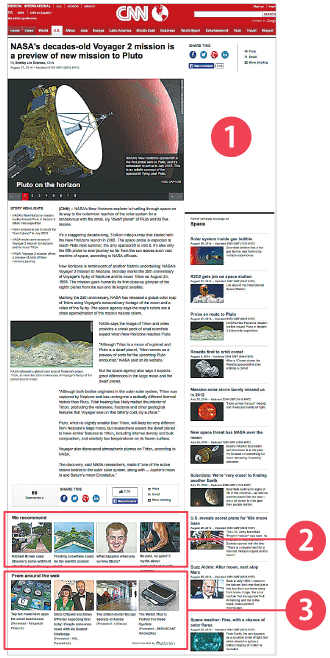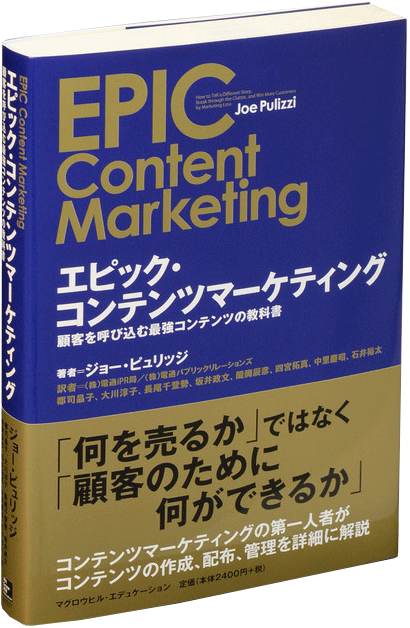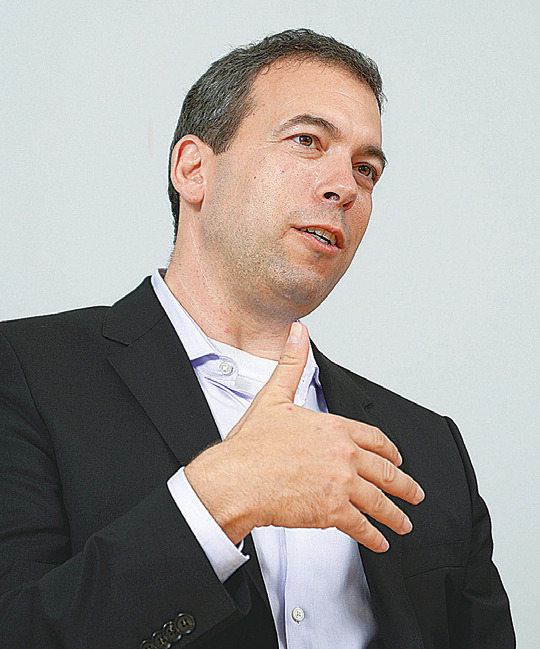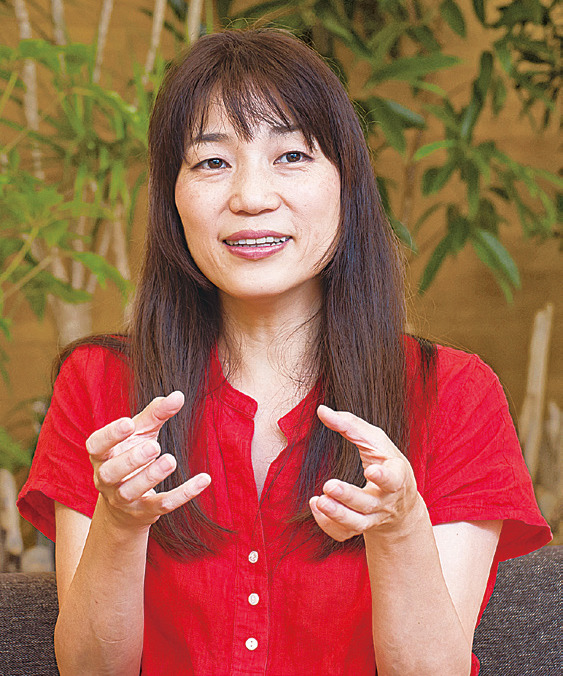The previous issue introduced the background behind the emergence of content marketing and its definition. To briefly recap, content marketing means "creating positive relationships with customers by disseminating information primarily through your own media (≈ owned media), leading them to take actions that generate revenue." This is underpinned by structural changes in the information space. The spread of the internet and the rise of social media have made it easier for consumers to access what they want, when they want, how they want, and to become publishers themselves, exchanging information with others.
Additionally, societal shifts like declining birthrates, aging populations, and population decline have created marketing demands beyond just acquiring new customers. Maintaining strong relationships with existing customers is now essential, further driving the focus on content marketing.
As mentioned in the column below, content in content marketing encompasses a wide variety of formats, including press releases, white papers, technical explanations, and product FAQs. The fundamental concept is to prepare this multifaceted information to capture customer interest, build trust, and thereby create business opportunities.
How to deliver content to consumers? This is the biggest challenge.
Many readers may now recognize a significant challenge inherent in content marketing. "Content marketing content" doesn't necessarily contain entertainment elements. Consequently, making it widely known and accessible is difficult.
Even traditional marketing, which incurs significant costs, struggles to connect with consumers. How, then, can we get consumers interested in "content marketing content"? And even if we succeed in sparking interest, where are these interested readers located, and how many can we realistically expect?
Solutions to this challenge have actually emerged. A prime example is the approach taken by companies like Out-Brain in the US, which collaborates with publishers to build content distribution networks. Additionally, publishers like Infobahn, which own multiple websites, are earning high praise from advertisers for their efforts to distribute content not only through their own platforms but also through partnerships with other companies.
Establishing content distribution is the key to successful content marketing.
Out-Brain provides a mechanism where its "Recommend Widget"—a content recommendation "frame"—is implemented on media company sites. This allows users to navigate both within and outside the site, starting from the "recommended" content displayed there.
Their recommendation widget consists of two functions: one that introduces articles tailored to each user's preferences, encouraging navigation within the site (internal content recommendation), and another that links to articles from external sites based on user preferences (external site content recommendation). The former introduces other articles within the site in a long-tail manner based on user preferences, aiming to increase page views and dwell time, thereby enhancing the media's value (≈ advertising value). The latter generates revenue by sending users to other sites. The resulting content distribution network (referred to by Outbrain as the "Content Discovery Platform") reaches 558 million unique users monthly worldwide, including over 190 million monthly users in the United States alone (*1). This figure ranks second only to Google, surpassing Facebook and Yahoo! Inc. in scale—a truly remarkable achievement (*2).
Outbrain's co-founder and CEO, Yaron Galai, operates this platform under an "Audience First" policy. The goal is to prioritize delivering content that users are interested in and engaging with, while connecting publishers whose content enables this.
"For example, with traditional newspapers, the average reader subscribed to one or two papers. Newspapers competed for these readers. However, as online news consumption became commonplace, readers could easily access topics of interest from multiple newspaper sites. In other words, what was once a zero-sum game now allows publishers to attract and retain users by offering content aligned with their interests. We have a system that analyzes over 6 billion requests daily using more than 50 algorithms to recommend content matching user preferences. By integrating valuable information disseminated by companies through content marketing into this system, we can deliver it to the optimal users." (Yaron Galai)
Using this system allows us to continuously introduce content to users with specific interests. Consequently, owned media content—which previously risked being like a "signboard erected in the middle of a desert"—can now be efficiently delivered to readers who find it valuable. Even content aimed at product promotion can be promoted at a cost if Outbrain determines it offers user value. While display ads like banners and keyword-targeted search ads represent push methods, Outbrain's content discovery platform operates as a pull method—users naturally "discover" and engage with content. Furthermore, if that information proves valuable, it ultimately becomes a shortcut to consumption—this is how Yaron views it.
In July, Outbrain held a large-scale briefing session for publishers in Japan. Adoption by newspapers and publishers is progressing, and since the service launched this spring, monthly unique users in Japan have already grown to approximately 30 million (※3).
Keigo Aoki of Dentsu Inc. Business Creation Center, who researches promising solutions in content marketing, speaks to its potential: "Companies handling products themselves possess the most comprehensive information—technical details about new products, development stories, and so on. Therefore, for users seeking deeper understanding before making a purchase, information directly from the company can sometimes be the most valuable. Recently, the usefulness of native ads as a new advertising method has been discussed. However, the fundamental issue isn't the format itself or whether the content is paid (advertisement) or unpaid (article). What truly matters is whether it provides the information users are seeking. Users have increasingly developed the skill to discern the authenticity of information. Furthermore, the proliferation of social media allows users to interact and evaluate information collectively. In this era, if companies communicate information with clear intent, it can be highly effective as marketing. Outbrain is a platform enabling this, and we receive many inquiries from companies interested in content marketing. It is also one of the solutions that Dentsu Inc. is closely watching.
A content distribution network that efficiently delivers owned media information to users—an area previously challenging in terms of reach. There is no doubt that establishing such an environment will accelerate the adoption of content marketing as a strategy.
※1: Comscore data as of April 2014, based on desktop access
※2: Access from PCs as of June 2014 (ComScore)
※3: Access from PCs as of July 2014 (ComScore)

What is content marketing, anyway?
Content marketing is "marketing utilizing content," but it differs from marketing aimed at selling movies, sports, anime, music, etc.
The general definition is: ① Utilizing owned media and other company-owned channels, ② Providing customers with valuable information (not necessarily entertainment-focused), and ③ Using social media and other tools to engage customers in dialogue, ultimately driving actions that lead to revenue. It can be described as dialogue-oriented marketing, particularly essential in an era where consumers freely access and share information.
The book "Epic Content Marketing" by Joe Pulizzi, a leading authority on content marketing (McGraw-Hill Education / Nikkei Publishing). Staff from Dentsu Inc. iPR Bureau and others participated in the translation work.

User-centric approaches enhance trust and elevate media value
As mentioned in the main text, Outbrain becomes available by integrating its dedicated widget into a website. For example, CNN.com significantly deviates from typical web page design, keeping display ads to a minimum except for special campaigns. Instead, it places Outbrain widgets to enhance navigation within its own site and provides readers with high-quality information, including content from external owned media. Outbrain's research shows that adopting this approach increases trust in articles and significantly improves the perception of owned media content.

![[1]](https://cdn.dentsu-ho-dev.com/6448591a-ed5d-49bf-9524-0a9227f6d55e/content_CNN_web_no1.png) Typically, display ads occupy this space. However, CNN.com omits such ad slots, resulting in a clean design. Viewing this webpage design makes one realize how the familiar web pages we see daily resemble the bustling signage of a busy downtown area.
Typically, display ads occupy this space. However, CNN.com omits such ad slots, resulting in a clean design. Viewing this webpage design makes one realize how the familiar web pages we see daily resemble the bustling signage of a busy downtown area.
![[2]](https://cdn.dentsu-ho-dev.com/97a18f7b-a22a-4630-a4fc-91629e9bb43d/content_CNN_web_no2.png) Outbrain widget. This area displays articles from CNN.com. Since articles are customized for each user, readers can progressively deepen their interest and engagement.
Outbrain widget. This area displays articles from CNN.com. Since articles are customized for each user, readers can progressively deepen their interest and engagement.
![[3]](https://cdn.dentsu-ho-dev.com/03d1e1c0-6eee-41cf-a278-649822615028/content_CNN_web_no3.png) Links to other web pages. Clicking here takes you to external sites. CNN.com earns revenue as compensation for sending traffic to other pages. The potential for monetization in the lower sections of such pages is another reason Outbrain's widgets are valued by publishers.
Links to other web pages. Clicking here takes you to external sites. CNN.com earns revenue as compensation for sending traffic to other pages. The potential for monetization in the lower sections of such pages is another reason Outbrain's widgets are valued by publishers.

Infobahn has been actively pursuing
MediaGene, which operates websites like Gizmodo targeting male audiences as well as sites covering women's lifestyle information and premium living. Infobahn, which owns MediaGene, actively proposes content marketing solutions as a digital agency.
"Our strength lies in transforming what companies want to communicate into compelling stories that users want to read, delivering them effectively, and providing empirical reports on their impact. Previously, users typically visited media websites or portals, but with the rise of social media and news apps, users increasingly navigate freely, engaging with information wherever they prefer. To reach users with corporate information in this environment, it's crucial to provide content that aligns with their interests and create diverse opportunities for exposure. While creating content is important in content marketing, having effective delivery methods is even more critical. We are also considering future collaborations with other media outlets to distribute content." (Motoko Imada, CEO, Infobahn)
While Infobahn's approach differs from Outbrain's, it also places significant emphasis on how content is delivered. When implementing content marketing, the question of how to deliver content is an indispensable perspective, not just about creating it.

Navigating the Content Marketing Era
As mentioned earlier, control over the information space is shifting to consumers. In this environment, the weapon companies can wield is engaging with consumers sincerely and disseminating information. The reason content marketing is gaining attention can also be seen as a collective unconsciousness that recognizes we can no longer turn our backs on this reality. When considering how to deliver content to consumers, the time has undoubtedly come for companies, advertising agencies, and media outlets to tackle these challenges together.

Yaron Galai
Outbrain Co-Founder and CEO
"Once, I purchased an audio system recommended in an article by a blogger I trusted, and it was truly excellent. Wanting to share this kind of experience with many people was the impetus for developing Outbrain. The situation surrounding media is largely the same in Japan as it is overseas. Our service will undoubtedly solve problems for many media outlets, and as a result, bring joy to many users."
Motoko Imada
Infobahn, Inc. Representative Director and CEO
"We currently have approximately 19 million unique users per month and about 145 million page views monthly. Since these are users actively seeking information out of interest, their mindset is highly valued by advertisers."
Keigo Aoki
Dentsu Inc. Business Creation Center
"The emergence of high-quality content distribution platforms like Outbrain and Infobahn has made effective inbound marketing strategies possible online. Several companies have already begun strategically utilizing these platforms."







![[1]](https://cdn.dentsu-ho-dev.com/6448591a-ed5d-49bf-9524-0a9227f6d55e/content_CNN_web_no1.png) Typically, display ads occupy this space. However, CNN.com omits such ad slots, resulting in a clean design. Viewing this webpage design makes one realize how the familiar web pages we see daily resemble the bustling signage of a busy downtown area.
Typically, display ads occupy this space. However, CNN.com omits such ad slots, resulting in a clean design. Viewing this webpage design makes one realize how the familiar web pages we see daily resemble the bustling signage of a busy downtown area.![[2]](https://cdn.dentsu-ho-dev.com/97a18f7b-a22a-4630-a4fc-91629e9bb43d/content_CNN_web_no2.png) Outbrain widget. This area displays articles from CNN.com. Since articles are customized for each user, readers can progressively deepen their interest and engagement.
Outbrain widget. This area displays articles from CNN.com. Since articles are customized for each user, readers can progressively deepen their interest and engagement.![[3]](https://cdn.dentsu-ho-dev.com/03d1e1c0-6eee-41cf-a278-649822615028/content_CNN_web_no3.png) Links to other web pages. Clicking here takes you to external sites. CNN.com earns revenue as compensation for sending traffic to other pages. The potential for monetization in the lower sections of such pages is another reason Outbrain's widgets are valued by publishers.
Links to other web pages. Clicking here takes you to external sites. CNN.com earns revenue as compensation for sending traffic to other pages. The potential for monetization in the lower sections of such pages is another reason Outbrain's widgets are valued by publishers.




